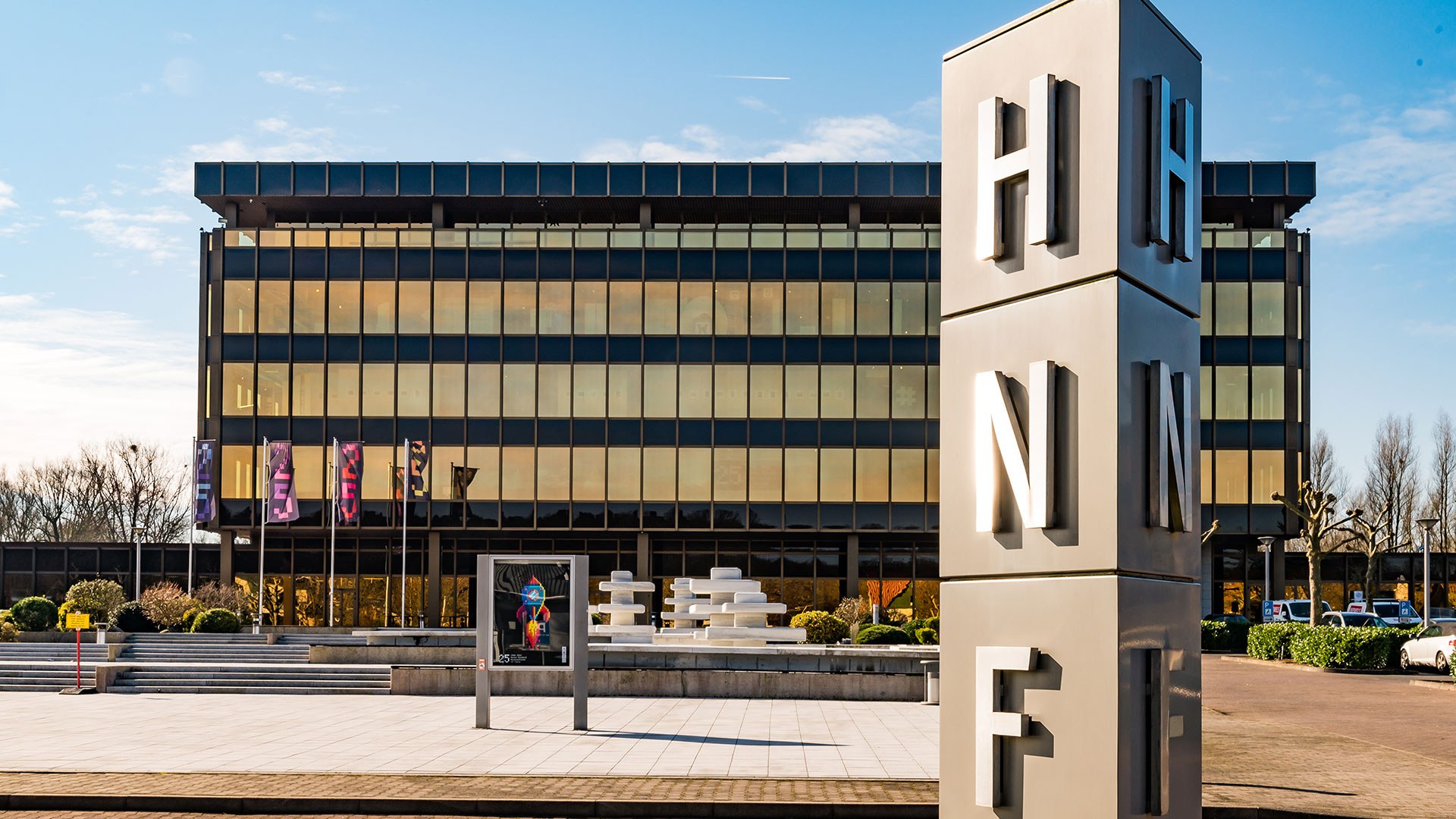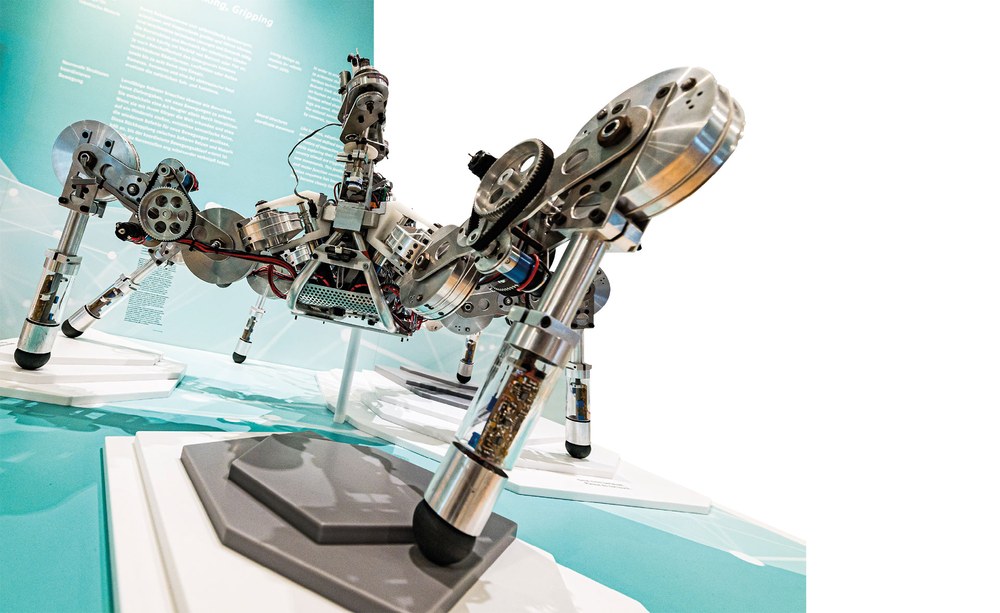Exploring the world of computer science

Heinz Nixdorf MuseumsForum
What fascinates most people about computer technology is probably not just the hardware, but particularly the latest applications. Both are the subject of the large permanent exhibition at the Heinz Nixdorf MuseumsForum in Paderborn. Here, visitors can immerse themselves in the wide world of information technology. This DLRmagazine article was written by a special team of authors. One part was written by ChatGPT, and the other by DLR editor Michael Müller. Can you guess which is which?
The history of computing brought to life
The Heinz Nixdorf MuseumsForum will fascinate technology enthusiasts, history fans and anyone with a curious mind. Located in the charming city of Paderborn, this museum offers visitors an exciting journey through the history of computer technology – from its humble beginnings to the cutting-edge technologies of today.
The collection covers a wide range of computer artefacts, including ancient calculating machines, early computers and vintage hardware. Visitors can also admire the incredible advances that have taken place over the years, from the large mainframe computers of the past to the sleek, powerful machines in use today. The attention to detail in the presentation of these artefacts, as well as the informative descriptions, bring the history of computing to life.
The museum also excels in conveying the importance of computer technology beyond its technical aspects. It places great emphasis on the social impact of technology, showing how it has revolutionised various industries and changed the way we live, work and communicate. The thought-provoking exhibits highlight the ethical and social implications of computing and encourage reflection about the responsible use of technology in a rapidly evolving world.
With its well-curated exhibits, interactive experiences and insightful commentary, the Heinz Nixdorf MuseumsForum offers an engaging and educational journey into the world of technology. Whether for technology fans or people simply curious about the impact of computing, this museum inspires, informs and conveys a deep appreciation for the ever-changing digital landscape.

Heinz Nixdorf MuseumsForum
On the trail of the bits
It is a round trip in the truest sense of the word. On two floors, visitors move in ever-tighter circles past hundreds of exhibits until they eventually reach the core of the exhibition. The entrance to the first floor transports them back to ancient times. They can follow a rich historical timeline – from the invention of writing to the first ratchet-wheel calculating machines of the Middle Ages pioneered by Tübingen professor Wilhelm Schickard (1592–1635), the start of series production of the French arithmometer, widely adopted by the insurance industry in the mid-19th century, and the comptometer. This device replaced clerks in the USA who specialised in the lightning-fast addition of long columns of numbers at the beginning of the 20th century. Even today, the comptometer can outperform modern pocket calculators when it comes to rapid addition.
The exhibits also reconstruct important breakthroughs in computer technology that occurred in the USA, England and Germany in the 1930s. They include the first machines that could perform complex calculations automatically, as well as electrical components such as relays and vacuum tubes that overcame mechanical barriers. An interesting side note – no patent has ever been granted for 'the computer'.
Heinz Nixdorf was formerly the Head of the MuseumsForum, which is located in the Nixdorf company's headquarters. He was one of Germany's greatest computer pioneers alongside Konrad Zuse. His life and work are, of course, part of the Hall of Fame, the core of the first floor. Alan Turing is also represented here, with a Turing machine on display. In the 1940s, Turing, a British mathematician, developed a test procedure to differentiate between human and artificial intelligence – a concept ahead of its time that is increasingly relevant today.

Heinz Nixdorf MuseumsForum
One floor up, the exhibition covers the widespread adoption of home computers for personal use. The influence of space exploration shaped this development significantly, particularly NASA's Mercury, Gemini, and Apollo programmes, which led to the historic Moon landing in 1969. The production of computers for the Apollo mission is especially striking. In a very time-consuming and errorprone process, the programmes of the control computer (capacity: 600,000 bits) were woven around magnetic ferrite cores. A wire that went through a core represented '1'; past the core represented '0'. This is just one of many remarkable stories from the early days of information technology that will leave a lasting impression.
The inner part of the second floor explores significant contemporary advancements, although it lacks any mention of quantum computing. Instead, it emphasises the potential of artificial intelligence. This article covers just a fraction of what awaits visitors to the museum. Allow ample time to make the most of a trip to Paderborn.

Heinz Nixdorf MuseumsForum
THE HEINZ NIXDORF MUSEUMSFORUM
Address:
Fürstenallee 7, 33102 Paderborn
Opening hours:
Tue to Fri 09:00–18:00,
Sat and Sun 10:00–18:00
ChatGPT (Chat Generative Pre-trained Transformer) wrote the first article. It is a chat program that uses artificial intelligence to communicate with human users via text-based messages. Michael Müller, author of the second text, is an Editor in the DLR Corporate Communications Department. An Article from the DLRmagazine 173.
